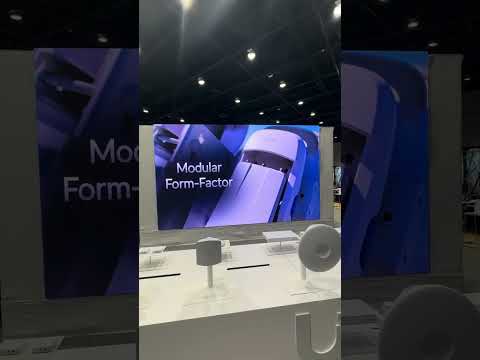In the rapidly evolving world of wireless communications, Ubiquiti AirFiber MLO (Multi-Link Optimization or Multi-Link Operation) is making significant waves. This breakthrough technology, leveraging the 802.11be standard—commonly known as Wi-Fi 7—promises to redefine the capabilities of wireless networks by offering unprecedented throughput and flexibility in both point-to-point and point-to-multipoint configurations.
What is Ubiquiti’s AirFiber MLO?
Building on the legacy of AirMAX, LTU, and AirFiber product lines known for robust and cost-effective point-to-point connectivity, the new iteration of AirFiber MLO technology significantly expands these capabilities. It integrates multi-link operation, allowing for simultaneous transmission across multiple wireless links, and is set to deliver speeds exceeding 5 gigabits per second. This considerable advancement supports the ever-growing demand for higher data rates across various applications.
Enhancements in AirFiber MLO
The key enhancement in AirFiber MLO is its adoption of the 802.11be standard. This technology supports extremely high throughput and more efficient data transmission, which is crucial for applications that require high bandwidth and low latency. Additionally, it allows operation in the 5 to 7 GHz bands, offering flexibility in frequency allocation and the potential for less interference, which is often a challenge in densely populated urban areas.
Applications and Impact
AirFiber MLO can dramatically improve connectivity in both urban and rural settings. In cities, it can provide an alternative method of high-speed internet delivery, alleviating the strain on existing networks. In rural areas, using Wi-Fi chipsets offers a cost-effective solution to enable high-speed internet access where traditional fiber optic cables are not feasible. The introduction of channel puncturing allows the system to maintain high performance over distances up to 100+ kilometers by avoiding parts of the spectrum that are noisy or interfered with.
Future Prospects
By 2025, the point-to-multipoint (PTMP) capabilities of AirFiber MLO will enable a single transmission point to serve multiple endpoints simultaneously. This will not only maximize the efficiency of network infrastructure but also reduce the cost per unit of data transmitted, making it an economically attractive option for service providers.
IsoHorns and Ubiquiti AirFiber MLO: Revolutionizing Wireless Connectivity
With the intro of Ubiquiti’s AirFiber MLO product line, using IsoHorns antennas becomes a game-changing strategy. Here’s how IsoHorns antennas are ideally suited for enhancing the capabilities of the Ubiquiti AirFiber MLO systems:
Enhanced Compatibility and Performance
IsoHorns antennas, known for their high-quality directional capabilities, are a perfect match for Ubiquiti’s AirFiber MLO, which aims to revolutionize wireless technology with its multi-link optimization capabilities. The Wideband 6 GHz Asymmetrical 90° Horn Antenna (WB6-A90) from IsoHorns complements the AirFiber MLO by optimizing coverage and maximizing throughput, essential for achieving the high speeds and robust connectivity promised by Ubiquiti’s new product line.
Future-Proof Networking
IsoHorns wideband antennas operate seamlessly across a broad frequency range from 4.9 to 7.2 GHz, aligning perfectly with the next-generation radio technologies including Wi-Fi 6e and Wi-Fi 7 standards supported by AirFiber MLO. This compatibility ensures that Wireless Internet Service Providers (WISPs) can leverage the latest in wireless technology while maintaining their existing infrastructure, thereby avoiding frequent upgrades and reducing long-term operational costs.
Minimizing Noise, Maximizing Reach
IsoHorns antennas are specifically designed to reduce noise—a crucial advantage for Ubiquiti’s AirFiber MLO when deployed in congested or challenging environments. The unique design of IsoHorns antennas, such as the asymmetrical horn with reduced side lobes, ensures that signal interference is minimized, thus enhancing the overall signal quality. This feature is vital for maintaining the integrity and performance of multi-link operations across wide areas, especially in point-to-multipoint setups.
Supporting High-Density Deployments
Ubiquiti’s AirFiber MLO aims to serve multiple endpoints simultaneously with high-capacity bandwidth. IsoHorns antennas facilitate this by supporting spatial division and frequency reuse techniques, crucial for managing airtime efficiency and optimizing subscriber capacity per access point. This makes IsoHorns antennas an integral component in achieving the dense network deployments envisioned with AirFiber MLO.
Durability and Reliability
In addition to performance, the durability of IsoHorns antennas ensures they can withstand the rigors of outdoor deployments, a critical factor for the long-term deployment of Ubiquiti’s outdoor wireless solutions.
Learn more at isohorns.com

Leave a Reply